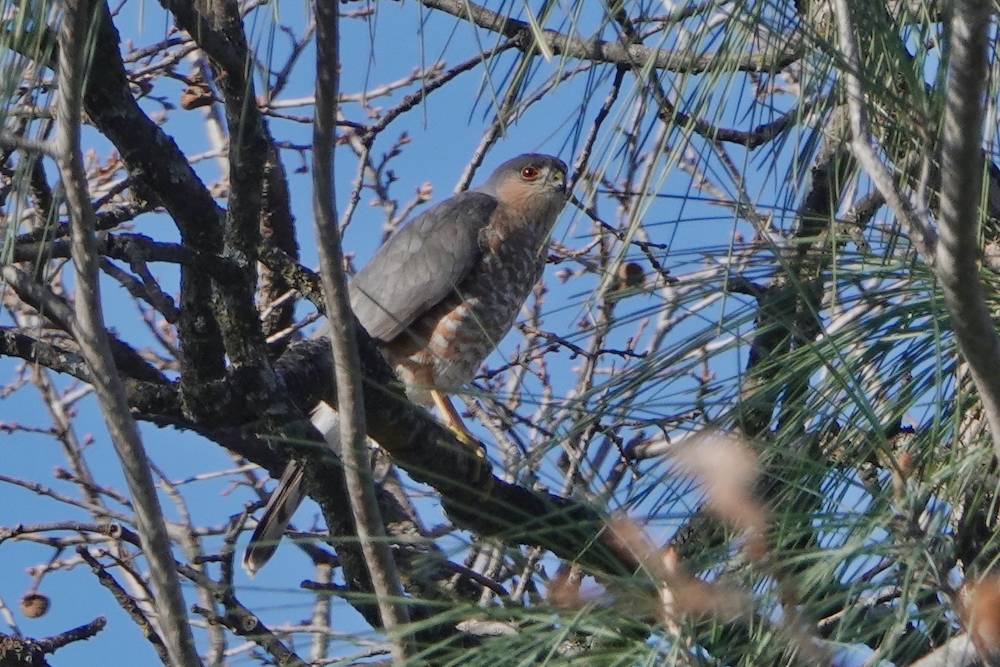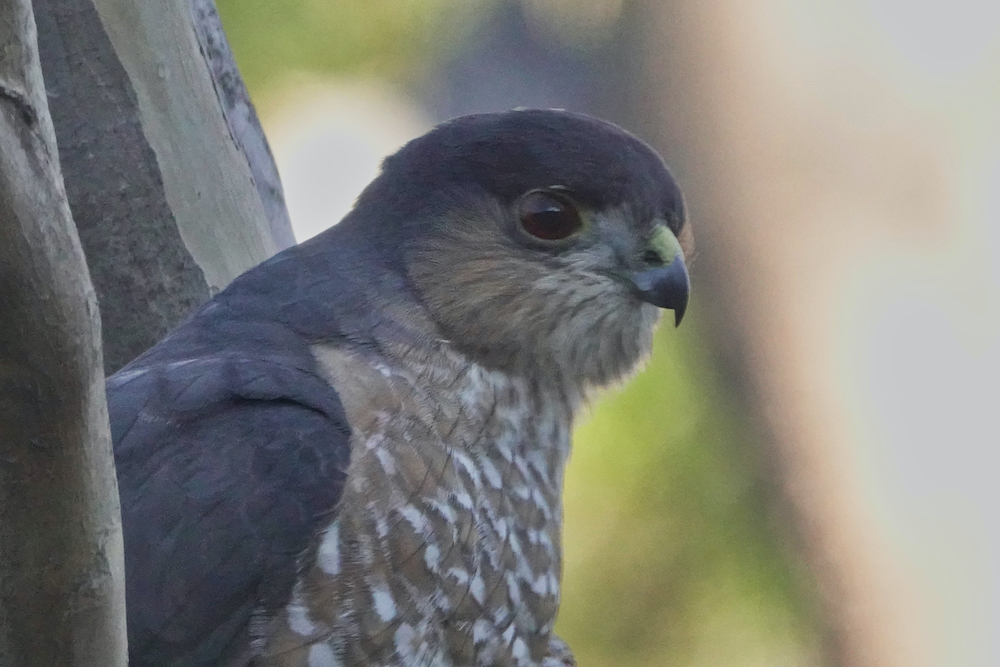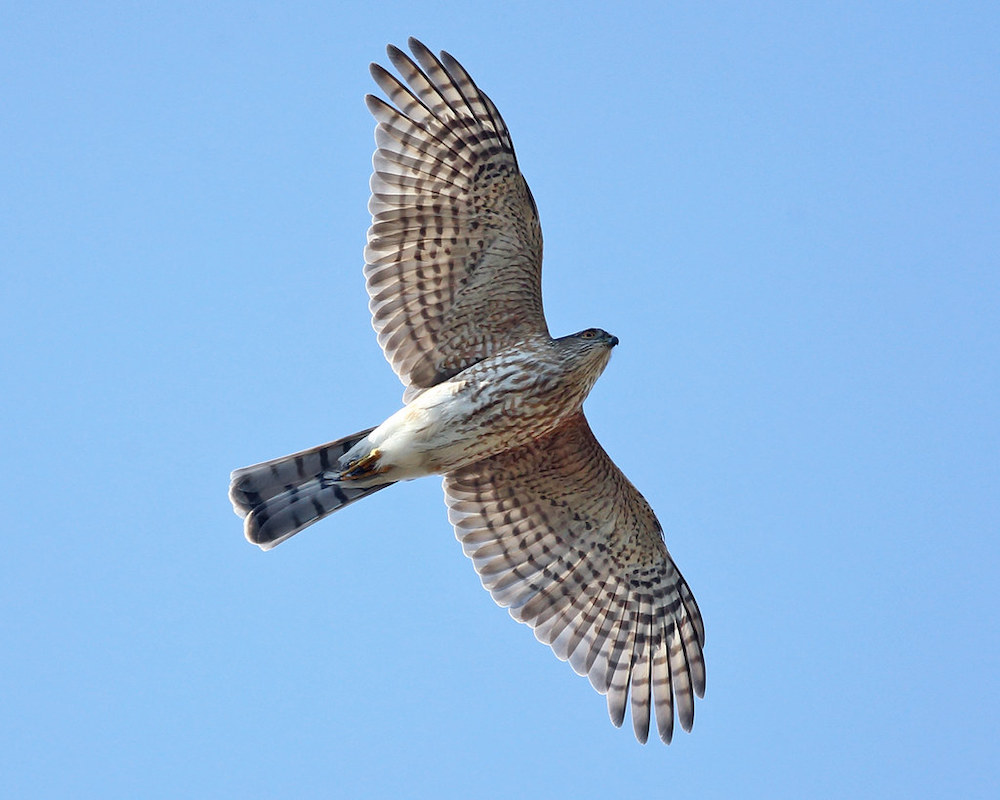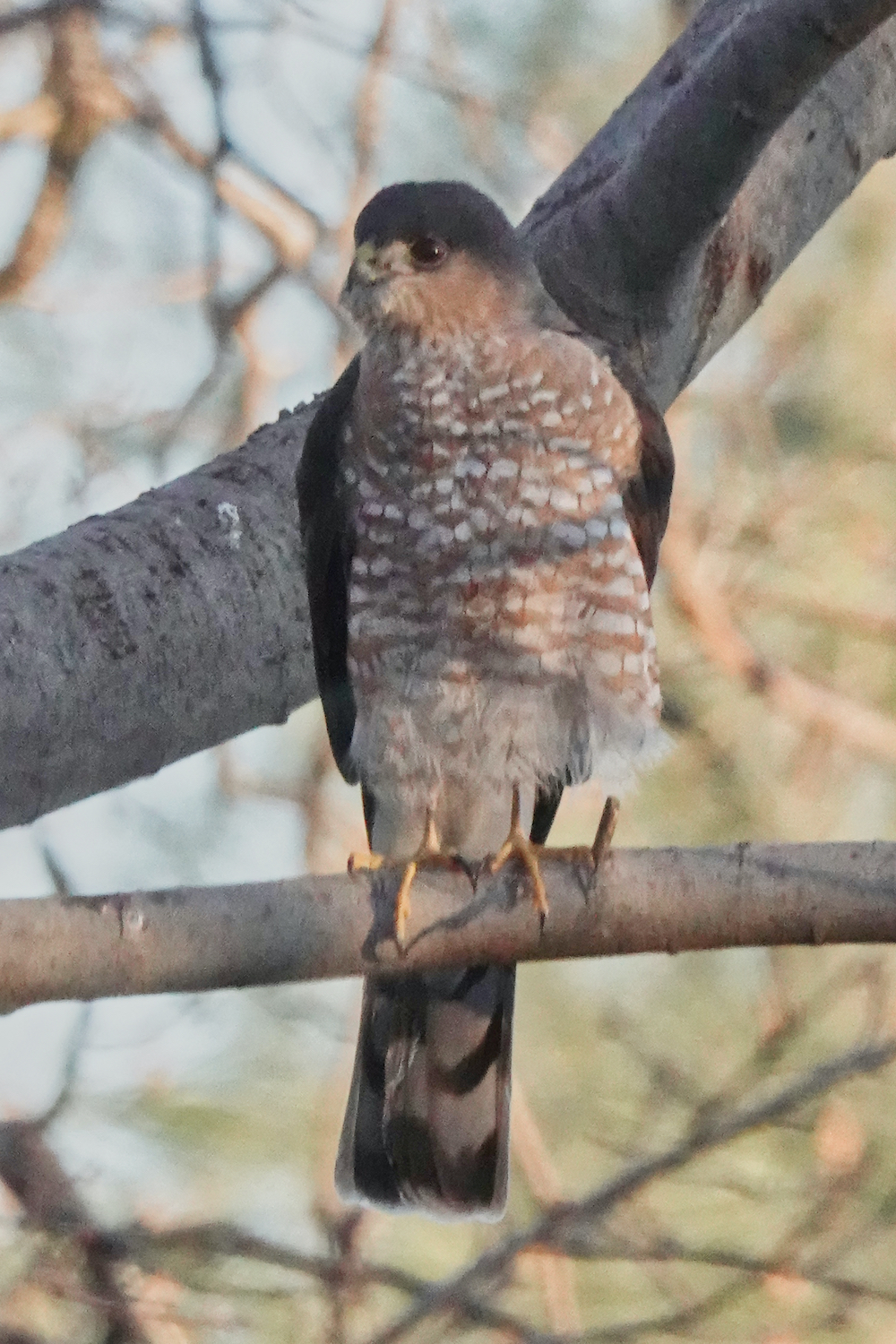
Sharp-shinned Hawk
The raptors are coming, the raptors are coming!
Fall is upon us, and migration is in full swing. The cliff swallows and orioles were moving in July, with warblers and vireos on their heels. Now, as their exodus southward continues, look for birds that have nested north of us to arrive. One of our winter residents, down from nesting in mountain conifers and Canada’s boreal forest, is the sharp-shinned hawk.
Raptors are birds of prey. Among the many North American raptors–eagles, hawks, falcons, etc.–the sharp-shinned is the smallest in the group called accipiters, stealth hunters that prey mainly on birds in fairly dense woods. They are well adapted to that habitat and lifestyle. Let’s start with their eyes.

Sharp-shinned Hawk Close
Sharp-shinned hawks, or “sharpies,” have the front-facing eyes typical of vertebrate predators. That positioning creates a blind spot behind, but allows two eyes to focus forward–the binocular vision that supports depth perception and successful hunting. Relative to our eyes, the hawks have about eight times as many rods and cones, providing their innate version of HD viewing. Further, where our eyes each have one fovea, or focal point, sharpie optical nerve endings are arranged to form two foveae–a central one that can focus on a fleeing bird and a peripheral one that can help the hawk avoid crashing into branches.
Forest hunting has also helped design sharpie body form. Their short, round wings sacrifice the soaring ability of larger hawks but gain mobility and quick acceleration for sudden attacks. Their long tails serve as rudders for abrupt maneuvering through forest obstacles.

One of the sharpie’s hunting styles is to perch low and explode upon an unsuspecting sparrow that happens by. If you see this small hawk perched, you may be able to observe its yellow, pencil-thin legs and fluffy white feathers under the base of the tail. Adults have red eyes, a slate-gray cap and back, gray-barred tail, and cinnamon-red barring on the breast. Juveniles have yellow eyes and are generally mottled brown, with thick streaks on the breast.

Sharp-Shinned Hawk in Flight courtesy Tom Murray
Sharpies also hunt by cruising low through brush and trees and, with sudden acceleration, pouncing on a potential meal. If you see this, it’s hard to discern more than a dark blur rushing by.
They hide their nests below the canopy in their forest homes, and tucked against a trunk. The female incubates her handful of eggs for a month. The male brings in food for the hatchlings, and later, the female, half again larger than the male, brings in larger prey to feed the growing chicks. The young will fledge at about a month old, and must develop their coordination and skills before striking out on their own and facing their first winter.
Sharpies are often seen at windy passes and peaks during migration. Perhaps their wings, so good for forest navigation but not for distance flying, benefit from the Earth’s corridors of air.
Through the winter they have no nests to hide and are less committed to being in forests. They can be found in suburbs and will frequently visit bird feeders, providing a twist on the definition of “bird feeding,” and generally stirring a mix of dismay and intrigue in their human neighbors.

No comments yet.